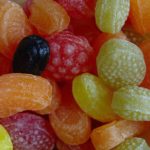By Ben Fuchs | Pharmacist Ben
By now, anyone who’s even slightly interested in health and wellness has heard of the term “excitotoxins”. These health destroying chemical compounds are associated with excitory or stimulatory activity in the brain. Just as there is relaxation and stimulation chemistry in the nervous system outside the brain, there is a similar relaxation and stimulation chemistry that takes place inside the brain. These chemicals are said to be inhibitory for relaxation and excitatory for stimulation.
In the last hundred years or so food manufacturers have figured out that by exciting the brain or activating the brain excitatory neurology, human beings can be fooled into thinking a particular food is the best tasting stuff we’ve ever eaten. If enough of these excitatory chemicals were used, a dog turd would taste like a filet mignon. These excitatory excite the brain; they make the brain happy. The problem is the brain excitatory system is tightly regulated and it’s not supposed to be stimulated by outside chemicals. These kinds of chemicals may be excitatory and may make the brain happy, but they can also ultimately be toxic, thus the term “excito-toxins”.
The brain’s most import excitatory chemical is something called glutamate and the principle artificial excitatory poison or excitotoxin is monosodium glutamate or MSG and if you are dealing with anxiety you should probably be staying away from this stuff. In fact, even if you’re not dealing with anxiety issues you would be wise to avoid MSG. The second excitatory chemical that the brain uses is something called aspartate. And the major source of exogenous aspartate is from Nutrasweet or as it’s known as in the chemical world aspartame. When aspartame is processed in the digestive tract it’s broken down into several components one of which is aspartate. Again, as with glutamate, this means if you’re dealing with anxiety issues you probably want to stay away from aspartame/Nutrasweet.
However, please keep in mind, and this is important to understand: Glutamate and Aspartate are nutrients; you need them and they are most certainly NOT POISONS. They both have critical nutritional value. And they are in no way toxic when consumed in foods and nutritional supplements. Aspartate is important for detoxification of ammonia, it’s involved in the production of DNA and it helps the body make other amino acids, especially lysine without which you can’t make connective tissue. And this is in addition to very important role in brain health. Meat, dairy, sprouts, avocadoes and asparagus are all going to provide you with aspartate and of course many nutritional supplements contain aspartates as part of their amino acid component.
And glutamate is also a key player in detoxification and it has important roles to play in energy metabolism as well as it’s very important role as an excitatory chemical for the brain. Pretty much all high protein foods meat, fish dairy and eggs are going to give you pretty substantial amounts of glutamates.
The problem with both of these substances arises from consumption in food additives that do not have food value or other amino acids to provide a balance. Basically what happens when you take in large amounts of MSG and aspartame is you’re getting large amounts of two very powerful amino acids without the co-factors that are required for the body and nervous systems to safely process these substances. But still these are amino acids without which you cannot live and when uses and consumes carefully they play an important part in keeping the body strong and healthy.
Excitotoxicity

By Jaiswal MK, Zech WD, Goos M, Leutbecher C, Ferri A, Zippelius A, Carrì MT, Nau R, Keller BU. via Wikimedia Commons

By Jaiswal MK, Zech WD, Goos M, Leutbecher C, Ferri A, Zippelius A, Carrì MT, Nau R, Keller BU. via Wikimedia Commons
Images: Low Ca2+ buffering and excitotoxicity under physiological stress and pathophysiological conditions in motor neuron (MNs). Low Ca2+ buffering in amyotrophic lateral sclerosis (ALS) vulnerable hypoglossal MNs exposes mitochondria to higher Ca2+ loads compared to highly buffered cells. Under normal physiological conditions, the neurotransmitter opens glutamate, NMDA and AMPA receptor channels, and voltage dependent Ca2+ channels (VDCC) with high glutamate release, which is taken up again by EAAT1 and EAAT2. This results in a small rise in intracellular calcium that can be buffered in the cell. In ALS, a disorder in the glutamate receptor channels leads to high calcium conductivity, resulting in high Ca2+ loads and increased risk for mitochondrial damage. This triggers the mitochondrial production of reactive oxygen species (ROS), which then inhibit glial EAAT2 function. This leads to further increases in the glutamate concentration at the synapse and further rises in postsynaptic calcium levels, contributing to the selective vulnerability of MNs in ALS. [File: CC-BY-2.0 (http://creativecommons.org/licenses/by/2.0), via Wikimedia Commons]











